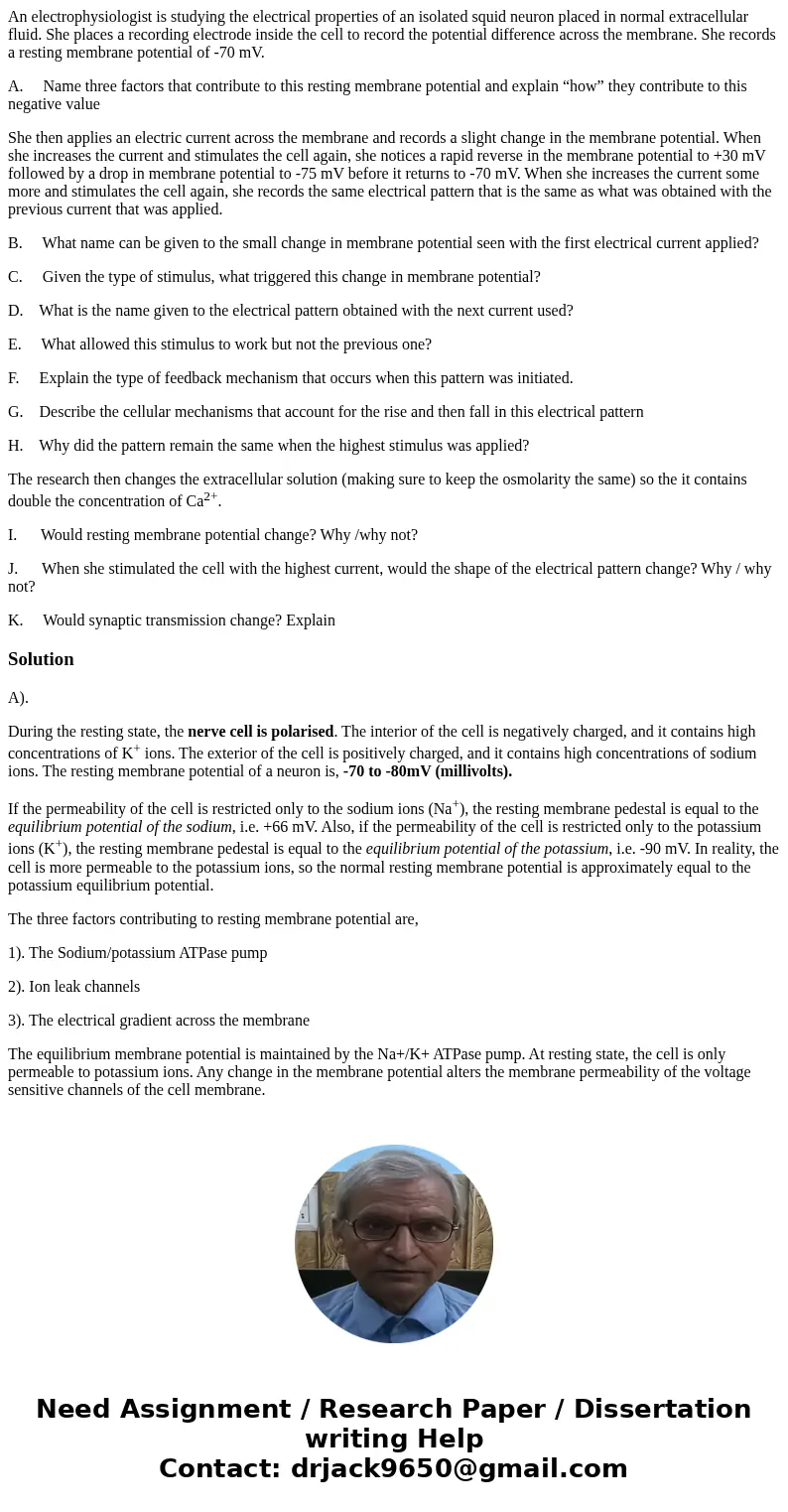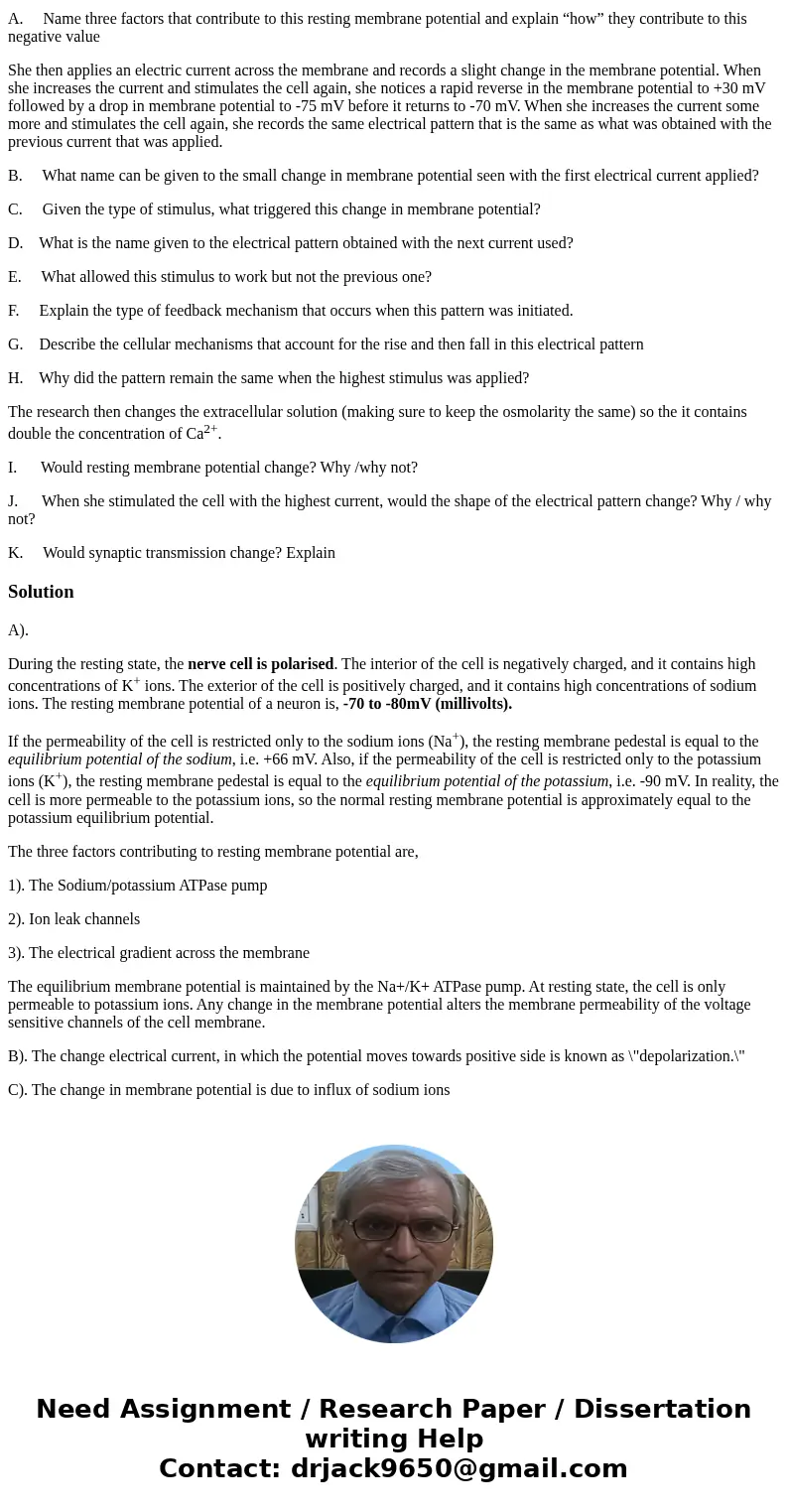An electrophysiologist is studying the electrical properties
An electrophysiologist is studying the electrical properties of an isolated squid neuron placed in normal extracellular fluid. She places a recording electrode inside the cell to record the potential difference across the membrane. She records a resting membrane potential of -70 mV.
A. Name three factors that contribute to this resting membrane potential and explain “how” they contribute to this negative value
She then applies an electric current across the membrane and records a slight change in the membrane potential. When she increases the current and stimulates the cell again, she notices a rapid reverse in the membrane potential to +30 mV followed by a drop in membrane potential to -75 mV before it returns to -70 mV. When she increases the current some more and stimulates the cell again, she records the same electrical pattern that is the same as what was obtained with the previous current that was applied.
B. What name can be given to the small change in membrane potential seen with the first electrical current applied?
C. Given the type of stimulus, what triggered this change in membrane potential?
D. What is the name given to the electrical pattern obtained with the next current used?
E. What allowed this stimulus to work but not the previous one?
F. Explain the type of feedback mechanism that occurs when this pattern was initiated.
G. Describe the cellular mechanisms that account for the rise and then fall in this electrical pattern
H. Why did the pattern remain the same when the highest stimulus was applied?
The research then changes the extracellular solution (making sure to keep the osmolarity the same) so the it contains double the concentration of Ca2+.
I. Would resting membrane potential change? Why /why not?
J. When she stimulated the cell with the highest current, would the shape of the electrical pattern change? Why / why not?
K. Would synaptic transmission change? Explain
Solution
A).
During the resting state, the nerve cell is polarised. The interior of the cell is negatively charged, and it contains high concentrations of K+ ions. The exterior of the cell is positively charged, and it contains high concentrations of sodium ions. The resting membrane potential of a neuron is, -70 to -80mV (millivolts).
If the permeability of the cell is restricted only to the sodium ions (Na+), the resting membrane pedestal is equal to the equilibrium potential of the sodium, i.e. +66 mV. Also, if the permeability of the cell is restricted only to the potassium ions (K+), the resting membrane pedestal is equal to the equilibrium potential of the potassium, i.e. -90 mV. In reality, the cell is more permeable to the potassium ions, so the normal resting membrane potential is approximately equal to the potassium equilibrium potential.
The three factors contributing to resting membrane potential are,
1). The Sodium/potassium ATPase pump
2). Ion leak channels
3). The electrical gradient across the membrane
The equilibrium membrane potential is maintained by the Na+/K+ ATPase pump. At resting state, the cell is only permeable to potassium ions. Any change in the membrane potential alters the membrane permeability of the voltage sensitive channels of the cell membrane.
B). The change electrical current, in which the potential moves towards positive side is known as \"depolarization.\"
C). The change in membrane potential is due to influx of sodium ions


 Homework Sourse
Homework Sourse